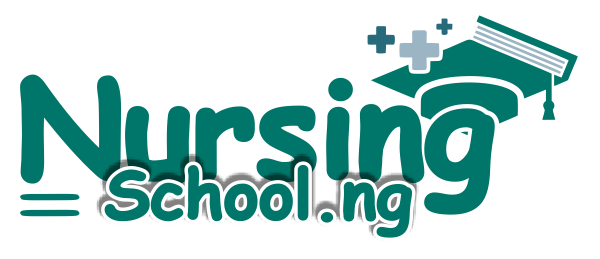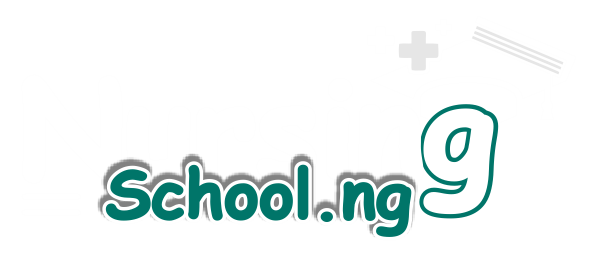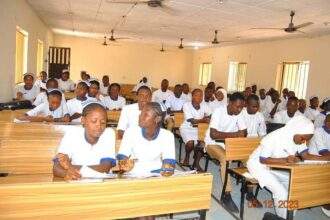- Version
- Download 1561
- File Size 4.76 MB
- File Count 1
- Create Date August 19, 2025
- Last Updated August 20, 2025
Download Anatomy & Physiology I Past Questions PDF and start preparing smarter. Master your Anatomy & Physiology exams with this comprehensive collection of past questions designed for nursing and medical students. This resource provides well-structured questions with accurate answers to help you test your knowledge, identify weak areas, and build confidence before the big day.
Anatomy & Physiology I Past Questions Key Features
- Extensive Question Bank: Covers essential topics in Anatomy & Physiology I.
- Answers Included: Each question comes with clear, correct answers for self-assessment.
- Exam-Focused: Designed to reflect real exam formats, helping you practice effectively.
- Time-Saving:** Streamlined content to help you review quickly and efficiently.
Anatomy & Physiology I Past Questions 2025
Preview a selection of Anatomy & Physiology I past questions included in this PDF resource. These sample questions give you a clear idea of the content, structure, and difficulty level, helping you see how this material can sharpen your knowledge, test your understanding, and prepare you for real exam conditions.
Question 1: Which of the following statements is true of the capillary?
A. Red blood cells do not normally pass through the capillary wall. (correct answer)
B. Its wall has a single layer of endothelial cells overlying a thin layer of smooth muscle.
C. Plasma proteins exchange freely across the capillary wall.
D. The smallest capillaries have an average diameter of about 20 microns.
Explanation: Capillary walls prevent RBC passage but allow exchange of gases and nutrients.
Question 2: Genetically programmed death of cells at the end of their lifespan is known as:
A. Necrosis.
B. Hypertrophy.
C. Hyperplasia.
D. Apoptosis. (correct answer)
Explanation: Apoptosis is the natural, regulated process of programmed cell death without causing inflammation.
Question 3: A carcinogen:
A. Irreversibly damages cellular DNA.
B. All of the above. (correct answer)
C. Induces a variable latent period between exposure and signs of malignancy.
D. Can be a virus.
Explanation: Carcinogens include chemicals, radiation, and viruses that can damage DNA and initiate cancer, often with delayed effects.
Question 4: Which joint movement describes turning the forearm so the palm faces downward?
A. Rotation
B. Pronation (correct answer)
C. Supination
D. Inversion
Explanation: Pronation is the inward rotation of the forearm, turning the palm downward.
Question 5: Which type of muscle tissue is under voluntary control?
A. Cardiac
B. Skeletal (correct answer)
C. Visceral
D. Smooth
Explanation: Skeletal muscle is under voluntary control, allowing conscious movement of body parts.
Question 6: The base of the heart is associated with which structure?
A. The diaphragm.
B. The xiphoid sternum.
C. The origin of the aorta. (correct answer)
D. The 5th costal cartilage.
Explanation: The base lies posteriorly, where the great vessels emerge.
Question 7: Skeletal muscle fibres:
A. Are striated. (correct answer)
B. Are branched.
C. Contract in response to sympathetic stimulation.
D. Have one, very large, central nucleus.
Explanation: Skeletal muscle fibres are long, cylindrical, and striated with multiple peripheral nuclei.
Question 8: The plasma membrane consists of:
A. A bilayer of phospholipids with the hydrophobic heads facing outwards.
B. A monolayer of phospholipids with the hydrophobic heads facing outwards.
C. A bilayer of phospholipids with the hydrophilic heads facing outwards. (correct answer)
D. A monolayer of phospholipids with the hydrophilic heads facing outwards.
Explanation: The plasma membrane is composed of a phospholipid bilayer with hydrophilic (water-attracting) heads facing outward and hydrophobic (water-repelling) tails facing inward.
Question 9: Synovial joints:
A. Possess a capsule lined with a fibrous ligament.
B. Include the sutures of the skull.
C. Are the only moveable joints of the skeleton. (correct answer)
D. Are lubricated with a small amount of serous fluid.
Explanation: Synovial joints are freely movable and are the only type of joint that allows significant movement.
Question 10: What structure separates the thoracic cavity from the abdominal cavity?
A. Diaphragm (correct answer)
B. Intercostal muscles
C. Pericardium
D. Pleura
Explanation: The diaphragm is a dome-shaped muscle that separates the thoracic and abdominal cavities.
Why You Need The This Past Questions
Whether you’re preparing for a nursing school test, medical school exam, or professional certification, these past questions will help you:
- Understand complex concepts with ease
- Practice under exam-like conditions
- Boost your confidence and ensure you’re fully prepared
Start studying smarter, not harder get your copy today and excel in Anatomy & Physiology I!





